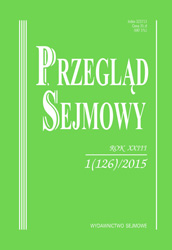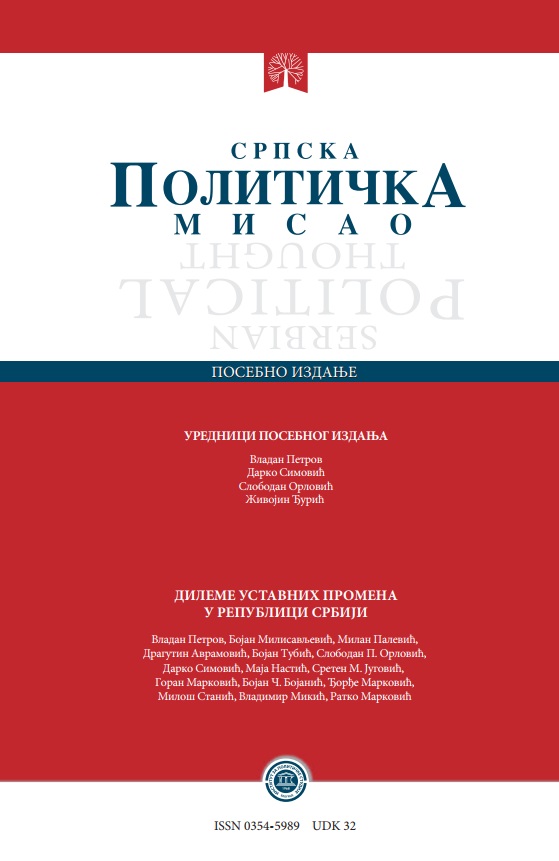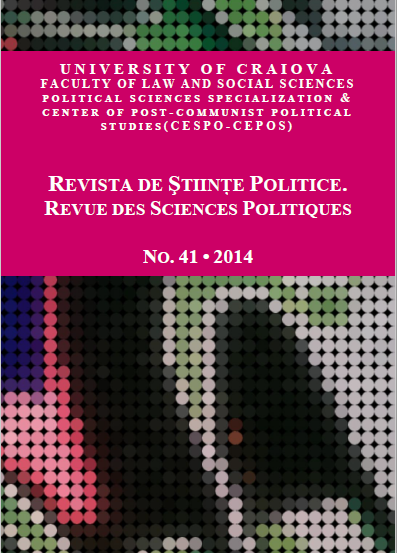Author(s): Bojan Č. Bojanić / Language(s): Serbian
Issue: 3/Spec/2017
Autonomy represents the characteristic of the territorial organization of Serbia, from the first socialist constitution up to the current Mitrovdan constitution. By the constitution from 1946, two autonomous provinces - the Autonomous province of Vojvodina and the Autonomous province of Kosovo and Metohija, were established in Serbia. The autonomy of Vojvodina appeared primarily from the traditional reasons, since, to tell the truth, it had the autonomy under the name Vojvodstvo Serbsko and Tamiski Banat in a relatively short span of time, in the middle of the nineteenth century, as part of the Austrian-Hungarian monarchy. The Albanian minority constituted most of the population on the territory of Kosovo and Metohija, therefore, the aim of establishing the autonomy was to enable nurturing the culture, language, as well as participation in the political life according to the Republic constitution. By the constitutions from 1974, the autonomous provinces become quasi-federal units - they are a constitutional element of the federation, they pass their own laws and hold constitutional, judicial, legislative and executive authority. The constitution of Serbia from 1990 carried on to the other extreme when it comes to the position of autonomous provinces as opposed to the previous constitutional decision-they lost the right of passing the laws, which is a fundamental aspect of any autonomy.
The constitution from 2006 did not bring many alterations to the regional organization of the Republic of Serbia compared to the previous constitutional structure, wherein the asymmetry as its aspect is now even more prominent. Namely, except for the fact that the autonomy was established just in one part of the territory of the Republic of Serbia, the position of the two autonomous provinces is different. Therefore, the constitution prescribes that the position of the autonomous region of Kosovo and Metohija, which has the substantial autonomy, is regulated by a specific law, which is passed in a procedure that anticipates the alteration of Constitution. The asymmetrical decentralization according to the current constitution, unlike the previous one, anticipates the possibility of forming the new autonomous provinces, which would have the jurisdiction as the current ones. The current constitutional frame does not offer the possibility of establishing the regional country as in the example of Italy or Spain, although those amendments were included in some of the proposals of the constitution coming from the ruling and opposition parties which adhered to the idea of broad decentralization. Thus far, after ten years since the constitution is in effect, a law that would put in order the „substantial” autonomy of Kosovo and Metohija is not passed, which, in any case, was not expected in the current circumstances. With the aim to find the solution which, until re-establishing the full sovereignty of the Republic of Serbia on this part of the territory, would be sustainable and acceptable in the transition period, the negotiation process was entered, the result of which was the First Аgreement of Principles Goverining the Normalization of Relations (Brussel Agreement). Apart from the fact that the Brisel Act and the Association/Community of Serb majority mnicipalities in Kosovo blatantly violated the constitution of Serbia, they do not even provide any autonomy for the Serbian people in Kosovo and Metohija, although according to the interpretations of the state authorities of Serbia (and the movement of Selfdetermination led by Aljbin Kurti, who compares it to Republika Srpska) other conclusions could be reached. The Brussel Agreement, as it was expected, was challenged before the Constitutional Court, but the Constitutional court of the Republic of Serbia did not appear as the authority defender of the Constitution and the constitutional values and of the hierarchy of legal norms. From a defender and guardian, it turned into an institution that denies and discredits it. By ignoring the attitude of the majority of constitutionalists that participated in an open debate, the Constitutional Court, contrary to any (legal) logic, concluded that the Brussel Agreement is not a legal, but a political act, and therefore cannot be the subject of the constitutional review.
Long before Brussel Agreement was adopted, two fairly problematic and unconstitutional legal acts that were supposed to put in order the position of the autonomous province of Vojvodina were passed - Act of Establishing Jurisdiction of the autonomous region of Vojvodina and Statute of the autonomous region of Vojvodina. The Statute and the Act came as a consequence of the fierce political atmosphere that spread from Vojvodina over to Belgrade. It was not the result of the idea about the autonomy of Vojvodina that maturedor of some calm and rational consideration of the political reality of Vojvodina, but was actually forced on the republican authority. The Statute of the autonomous region of Vojvodina rose above the Constitution of the Republic of Serbia from 2006, and assumed the right to interpret and alter the will of the makers of the constitution, adding multiple solutions about the autonomy of Vojvodina, which are either not recognized by the Constitution or are in a direct opposition to it. This is most evident in the fact that the Constitutional Court of the Republic of Serbia in the 88-page judgment denied the constitutionality of 22 provisions of the Act and more than 40 provisions of the Statute of the autonomous region of Vojvodina.
provisions of the Statute of the autonomous region of Vojvodina. The question of the territorial autonomy has been the source of constant tension and instability, and after more than seventy years of its being inexistence, the suitable model is pursued. Regionalisation as in the example of Italy or Spain was often mentioned as one of the possible solutions. The fact that the citizens did not, in ten years, use their constitutional right to form new provinces, informs us that this topic was artificially imposed and that it is often used for daily political purposes. In the context of future constitutional alterations, it is necessary to re-examine the existing concept of irregular decentralization, and it seems that it would be reasonable to raise a question of the existence of territorial autonomy. In that sense, bilateral and political local autonomy should be considered as an adequate model of the decentralization of authority.
More...

















